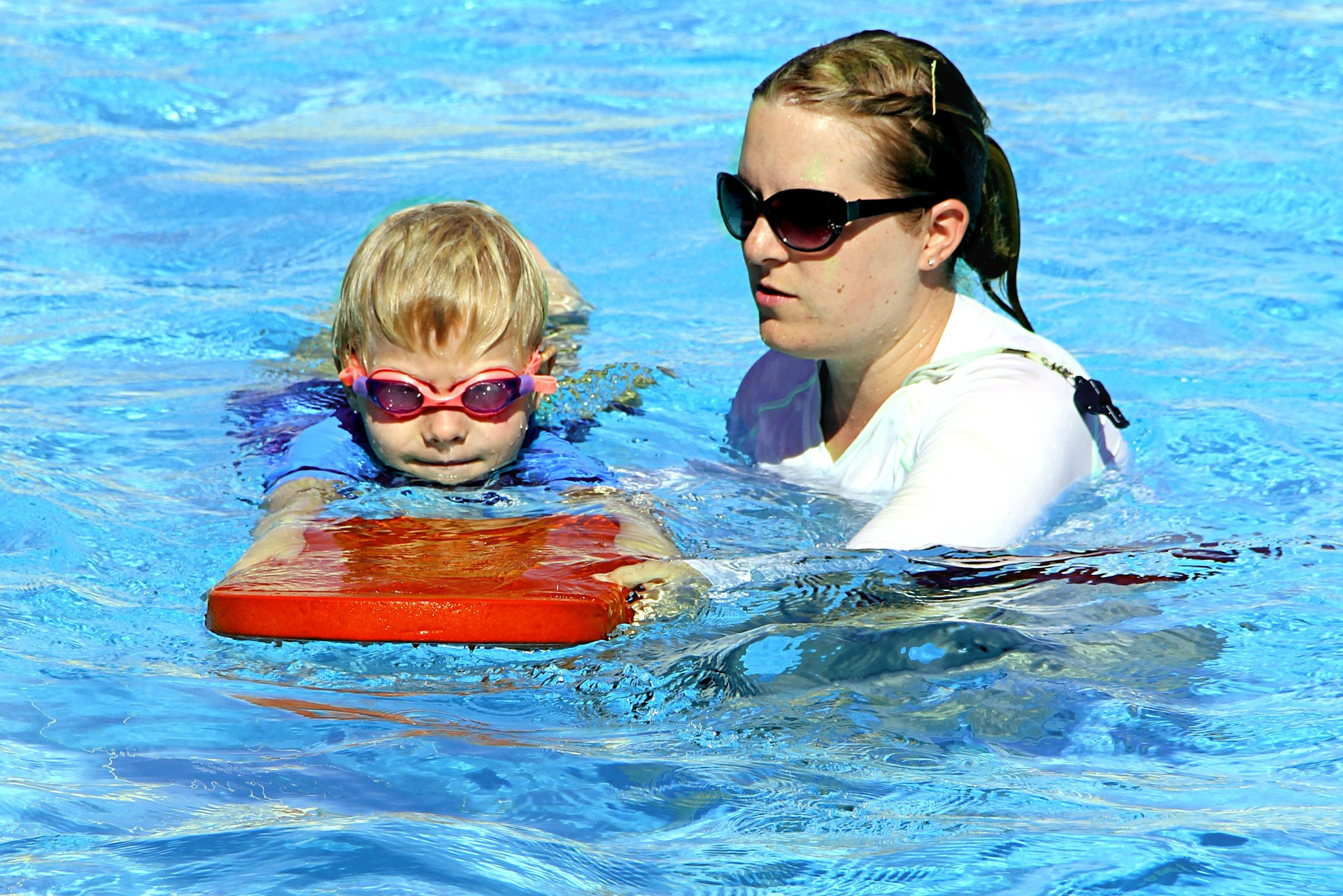Alliances between corporations that offer similar products or services is a classic concept. How often have you gone to the gym and been offered discounts on apparel and weight lifting gloves at your local Nike store, or a coupon for a sports massage at the spa down the street? If you’re planning a big party, any florist can provide the names of a dozen photographers and event coordinators who they’ve worked with and would highly recommend.
These relationships are so pervasive because they work. If you’ve never considered getting your store involved in such an alliance, consider partnering up with your local swim school. These aquatic institutions have dozens, if not hundreds, of students in need of a variety of swim products … that could all be supplied by your store.
The Deal
Unlike basketball or soccer, swimming is a sport that doesn’t come cheap. Plenty of gear is required in order to ensure a safe dip into the pool.
“Swim-lesson participants need towels, they need goggles, they need swim caps, they need toys that they can take home and practice with on their own time,” says Jennifer C. White, COO and swim school specialist with the Starfish Aquatics Institute in Savannah, Ga. “So, there’s plenty of opportunity.”
It’s true that many swim schools have retail facilities onsite, but for those that don’t, Starfish encourages relationships with retailers because they’re mutually beneficial. The students get everything they need for class, and the retailer has an opportunity to expand its customer base.
No idea how to initiate this type of relationship with your friendly neighborhood swim school? White, along with Misty Selph, swim school specialist at Starfish, have laid out a few key points:
Think locally. Zero in on a school that’s within a 10-mile radius of your store. If you select one that’s clear on the other side of town, parents will be a lot less likely to hike all the way to your store — no matter what type of products you offer.
Do a site visit. If the school is open to the public, plan a visit to the facility to familiarize yourself with the programs and activities that are available. This will allow you to become educated about the program through the eyes of the swim student.
Contact management. Request a meeting with the aquatics manager, and be prepared to introduce yourself and your products, along with your reasons for wanting to do business with the facility. But don’t make the meeting all about you. Focus on becoming partners with the school and the benefits both organizations stand to gain rather than being a salesperson.
Ask if the program supervisors and instructors recommend or require their students to use specific types of equipment. Many swim instructors discourage students from purchasing low-quality goggles or swim caps, for example, because they interfere with the instructor’s ability to teach when the products don’t perform. If you stock the brands that the swim instructors know and love, then let them know. If you don’t, consider making some additions to your inventory.
Consider various partnership ideas. There are lots of ways that such a partnership can work. If the facility is OK with having representatives from your store onsite, you can set up a table at the swim school during class hours or on registration day to sell products at a discounted rate. The swim school can receive a percentage of the overall sales in exchange for granting you access to the premises.
But if the school would prefer to send students to your store, you could create a flyer advertising your products and discounts as an “ABC Swim School” special. If the flyers are available at the school, each one could be worth a certain discount on various products when presented at the register. Teachers could even use products from your store as a reward. When students reach a certain benchmark during their swim lessons, teachers could provide a coupon to come to your business and get a free prize (a rubber duck or some other inexpensive pool toy). The child is delighted to have a new toy, and the visit to the store gives the parents an opportunity to hopefully stick around and do some shopping.
You could even take things a step further and provide students with a swim school supply bag that contains everything they’ll need for their lessons: goggles, swim cap, towel, sports bag, etc., when they register for classes. The cost of the bag could be included in the registration fee or as an additional fee. If doing this, make sure some of those products are stamped with your store’s logo. The children will most likely bring those items with them when they travel to community pools or local water parks, and your logo will be visible for all to see.
Figure out the finances. Potential profit from these partnerships depends on a variety of factors, including the number of students enrolled in classes and the price point of each product.
But it couldn’t hurt to do a bit of number crunching to make sure the partnership is worth your while. If you set up shop at the school on the first day of swim lessons and sell 200 pairs of goggles at $16.95 per pair, you can generate $3,390. After giving 10% ($339) back to the swim school, you could make $3,051. If your cost of the goggles is $2,020, your take for the day would be $1,031.
Added Benefits
Such a business partnership can also be used to strengthen your local aquatic community. White notes that Starfish encourages its schools to get involved with local water safety organizations and establish themselves as community experts. Your retail business can take part in helping to spread the water-safety message by providing coloring or activity books that focus on drowning prevention to local schools or at community events, Selph suggests. If the books are marked with your business logo, you will have successfully helped to strengthen the community’s knowledge about drowning prevention as well as driven more traffic to your store.



